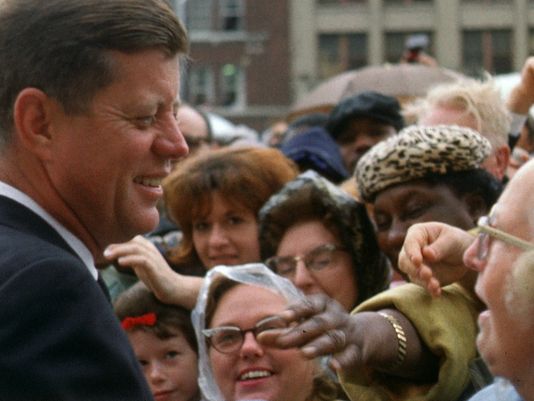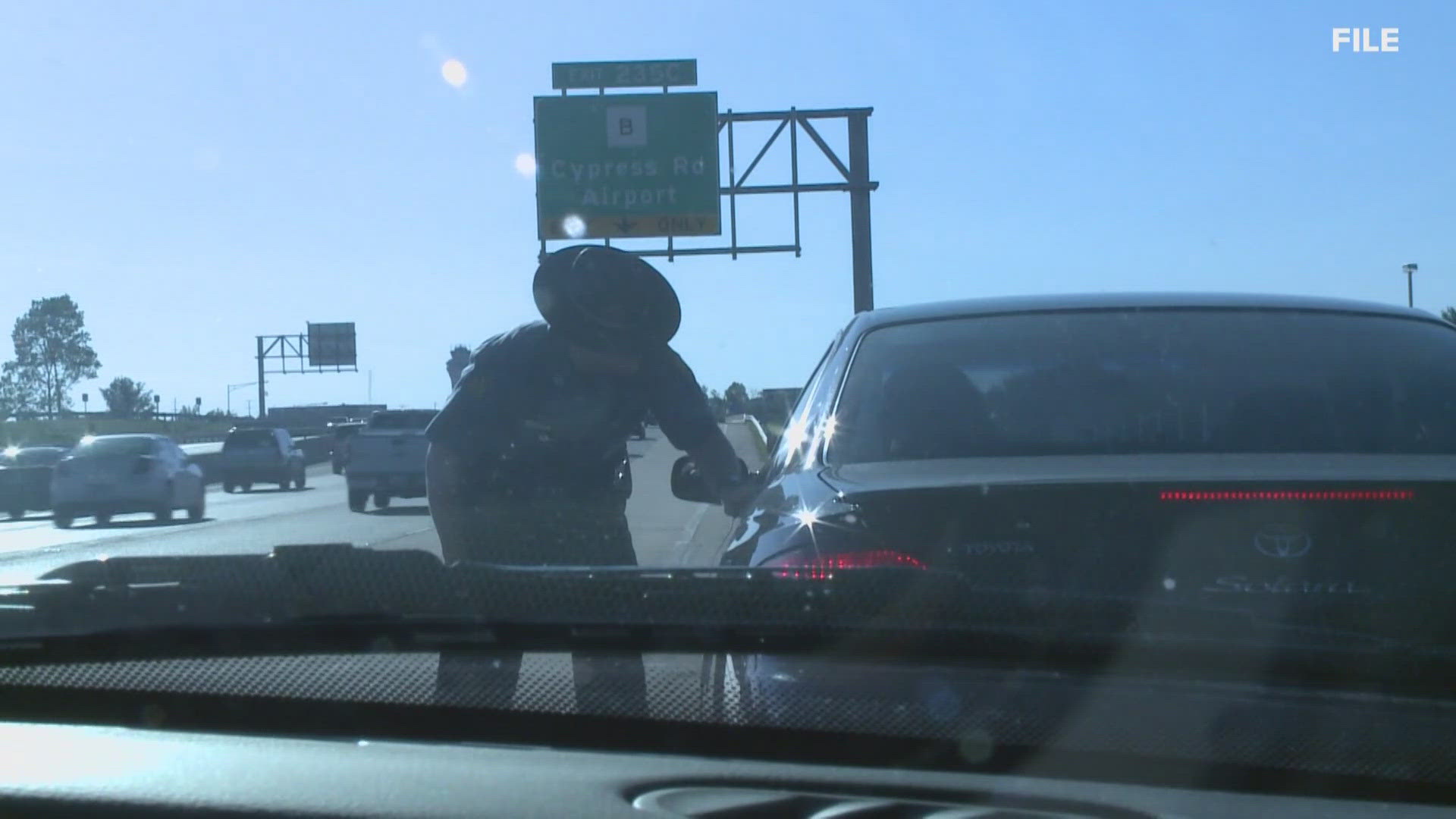USA TODAY - The Texas itinerary was tight: Houston and San Antonio one day, followed by Fort Worth, Dallas and Austin the next, according to JFK: The Final Hours, a new documentary airing Nov. 8 on the National Geographic Channel. Kennedy hoped to use the trip to resolve a rift within the Texas Democratic Party and raise money. It was significant for another reason: It was Jacqueline Kennedy's first public trip since the death of the couple's infant baby, Patrick, who died shortly after birth in August 1963.
After a brief dedication speech at Brooks Air Force Base in San Antonio, the president steered off a tight itinerary to visit volunteers living and undergoing tests in a low-pressure altitude chamber. He pulled on a headset to talk to one of the volunteers inside the chamber, Philip "Flip" Jameson, then 19 years old. "My heart stopped, just for a few seconds," Jameson says in the film.
From San Antonio, the first couple headed to Houston. There, they visited a gathering of the League of United Latin American Citizens, a Latino advocacy group. Organizers were told the president may (or may not) show up for a brief meet-and-greet. Instead, Kennedy and the first lady arrived and promptly climbed onto the cramped stage. Then, Jacqueline Kennedy, flanked by a mariachi band, addressed the crowd in accented but clear Spanish, drawing boisterous applause. Clint Hill, a Secret Service agent assigned to the couple, would later disclose how the first lady had crammed for her short speech aboard Air Force One during the Washington-to-Texas flight.
The president's off-script visits and focus on Texas underscores how badly Kennedy, a Democrat, needed the state for his re-election, says Jeffrey Engel, director of the Center for Presidential History at Southern Methodist University in Dallas.
"He was really interested in making sure Texas stayed in the Democratic column in the upcoming 1964 election," he says. "The Republican Party was slowly but steadily making inroads in Texas."
After another fundraiser in Houston, the Kennedys traveled to Fort Worth, where they would spend the night before heading to Dallas. They were scheduled to spend the weekend at Vice President Lyndon Johnson's ranch outside Austin.
Shortly before their arrival, Fort Worth residents learned from a front-page newspaper story that the Kennedys would be staying in a smaller suite at the Hotel Texas, instead of the larger and better-furnished Will Rogers suite, due to security concerns. A group of local art enthusiasts and collectors led by local curator Ruth Carter Johnson – most of them ardent Republicans – scrambled to put together an impromptu collection of paintings and sculptures to properly decorate the presidential couple's suite, says Andrew Walker, director of the Amon Carter Museum of American Art in Fort Worth.
In just five days, the group gathered 16 pieces – five from museums, the rest from local collectors – that would impress the most seasoned curator: a bronze owl sculpture by Pablo Picasso; Swimming, an 1885 oil on canvas masterpiece by American artist Thomas Eakins; a featured work by impressionist painter Claude Monet; an oil painting of Manhattan by American expressionist Lyonel Feininger. The pieces were carefully placed throughout the Kennedy's two-room, eighth-floor suite.
The Kennedys arrived to the hotel late that night and went to sleep without noticing the priceless collection surrounding them. But the next morning, the president and first lady called Ruth Carter Johnson to say how much they enjoyed the art and thanked her for the effort. It was the last-known private phone call made by the president.
"That story got lost," Walker says. "The dark cloud of the assassination had long buried this wonderfully affirming story."
Later that morning, the Kennedys joined a large breakfast gathering in the ballroom of the Hotel Texas. Attendees remember the smallest details: Kennedy shaking hands with each member of the Texas Boys Choir who sang at the event; Jacqueline dazzling the crowd with her pink dress, pillbox hat and radiant smile; the couple seemingly charmed with one another.
"We didn't even vote for Kennedy," says Friedman, who attended the breakfast. "But by the end of the day, we were like everybody else – totally captivated."
Friedman and her husband later escorted the Kennedys to Carswell Air Force Base, where they would take the 14-minute flight to Dallas. As the couple climbed onto Air Force One, Friedman turned to her husband and voiced concern over the ultra-conservative, anti-Kennedy sentiment brewing in the nearby Texas city.
"I hope they behave themselves in Dallas," she said.


